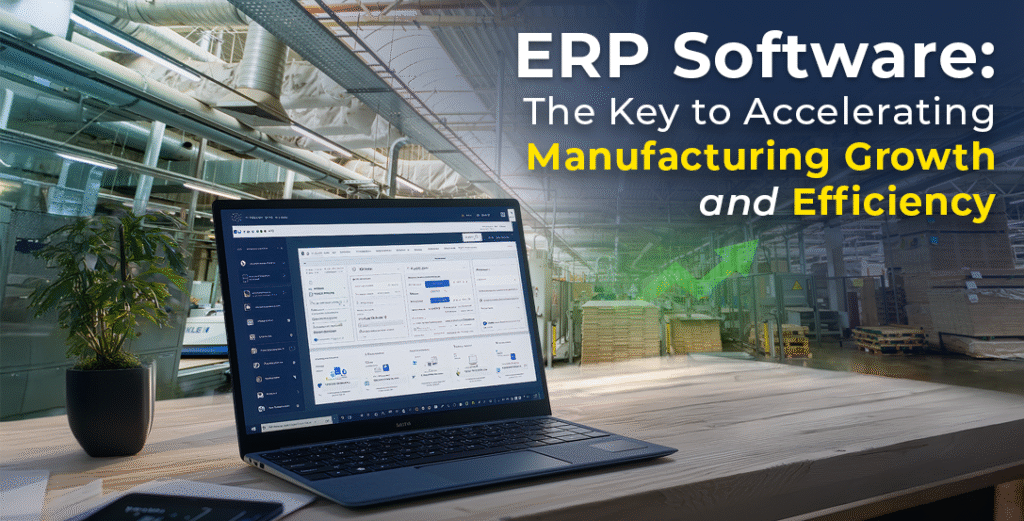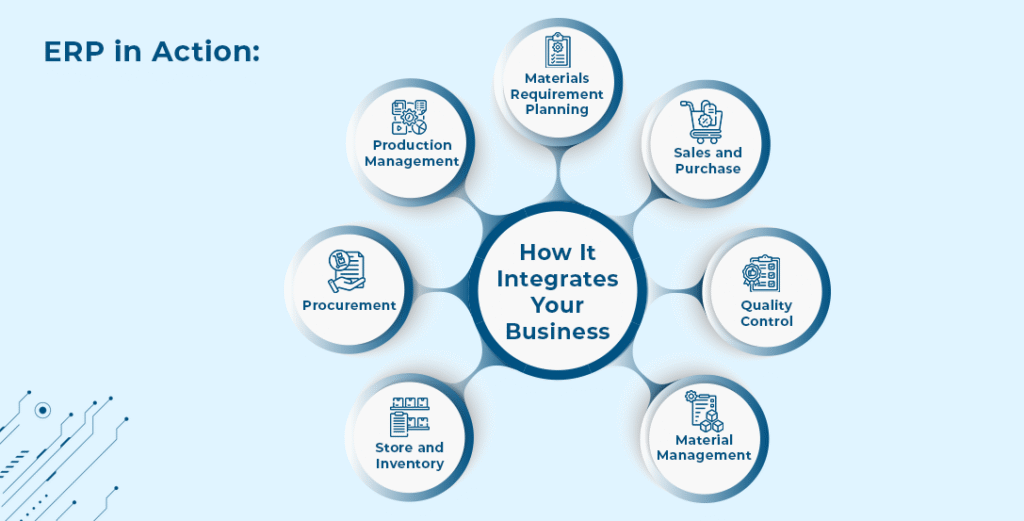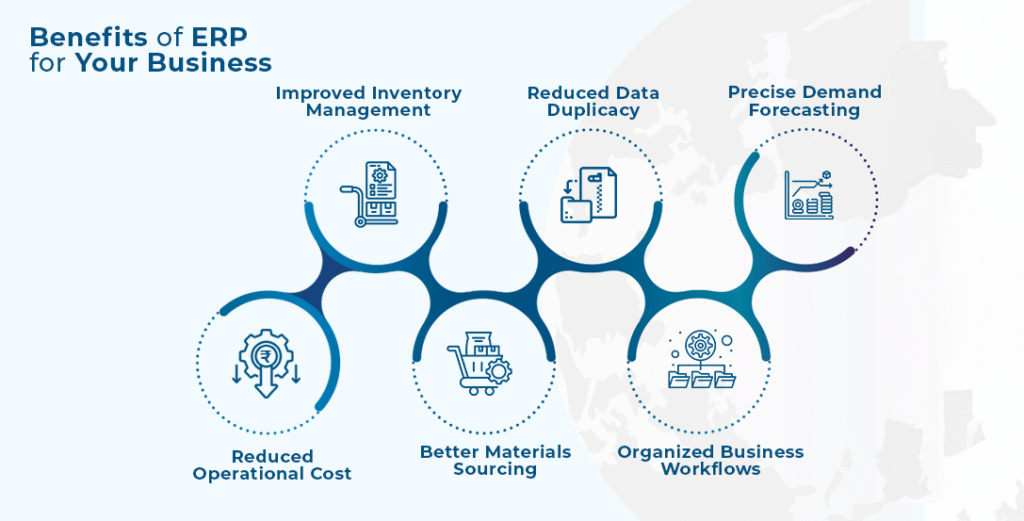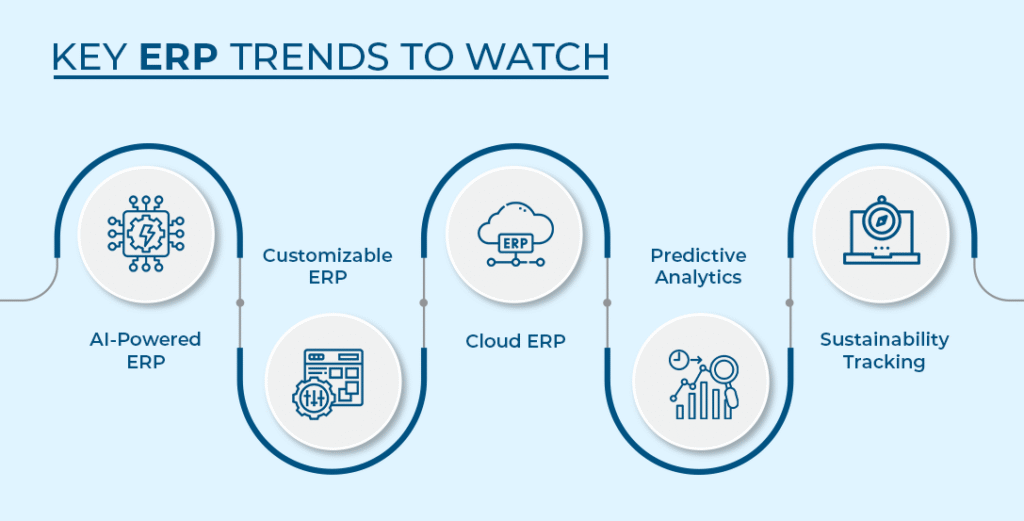
ERP Software: The Key to Accelerating Manufacturing Growth
Your manufacturing operations are getting complex—can your team handle it?
As the production ramps up and orders roll in, the real bottlenecks often hide in plain sight: disconnected systems that don’t talk to each other, BOMs scattered across spreadsheets, and no clear visibility into WIP, inventory, or order tracking.
That’s not just operational friction—it’s a risk to throughput, margins, and growth.
This is where ERP (Enterprise Resource Planning) becomes more than just software—it’s your digital backbone. By integrating core manufacturing functions like production planning, inventory control, procurement, and sales into a single, real-time system, ERP software helps eliminate data silos and drive plant-wide efficiency.
Keep on reading to discover:
- What ERP means for modern manufacturing.
- How it helps optimize your end-to-end value chain.
- And how leading factories are using it to boost overall equipment effectiveness, reduce lead times, and stay scalable without losing control.
If you’re feeling the pinch of growing complexity, it might be time to upgrade your systems—not your headcount.
Let’s get into it.
ERP: Your Secret Weapon for Manufacturing Success
Ever had a sales team close a deal, only to realize the product isn’t in stock?
Then the inventory team’s scrambling to find it, and the finance team’s unsure about the numbers. It’s a mess.
Here’s where ERP steps in. It’s like having one system that ties everything together. Sales, inventory, finance—they all sync up in real-time.
As soon as an order is placed, everyone knows exactly what’s happening. No more juggling spreadsheets, no more delays, just smooth operations across every department.
No more information gaps. Just one streamlined process where every department is on the same page, and data flows seamlessly.
At its core, ERP connects all your business functions into one powerful platform, giving you real-time insights and control over every moving part of your business. It’s the ultimate tool to make faster, smarter decisions and keep your operations running like a well-oiled machine.
Now that we have understood what ERP is, let’s break down how it works.
ERP in Action: How It Integrates Your Business

Imagine your business as a well-coordinated sports team. Each department—finance, sales, HR, inventory—has its own role, but to succeed, they all need to work in sync. That’s where ERP steps in, acting as the coach ensuring everyone communicates and performs seamlessly.
For example, when the finance team needs to assess the company’s financial health, they no longer waste time manually gathering data. The finance module pulls information automatically from the sales and inventory modules, ensuring accuracy and up-to-date insights.
The power of ERP lies in its shared database, allowing all modules to work together effortlessly. Whether it’s managing inventory, tracking sales, or overseeing employee data, everything is connected in real-time.
What’s even more advantageous is the flexibility of modern ERP systems. You can select the modules that fit your current needs—be it inventory management or simplifying HR processes—and expand as your business grows.
Plus, integrating with tools like CRM and e-commerce platforms is straightforward, giving you a comprehensive view of your operations and promoting collaboration across teams.
This interconnected approach ensures smooth operations and helps your business stay competitive and efficient.
Still not convinced whether you should implement ERP in your business? Lets take a look at how it can make a difference in your business.
The ROI of ERP: What It Delivers to Your Business

Efficiency isn’t optional. It’s your competitive edge.
Here’s how ERP helps you cut waste, speed up workflows, and boost margins.
- Instant Data, Smarter Decisions: Forget waiting around for those end-of-month reports. With ERP, you get live data on everything—sales, inventory, finances—so you can make quick, smart decisions on the spot.
- Simplify Operations, Save Costs: ERP takes care of the repetitive stuff by automating tasks and connecting your teams. That means fewer mistakes, faster processes, and ultimately, lower costs.
- Teamwork Made Easy: Whether it’s procurement, sales, or finance, everyone’s on the same page with ERP. When everyone has access to the same real-time data, things just move faster, and decisions are made quicker.
- Protect Your Business: In today’s world, data security is key. ERP ensures your business data stays accurate, secure, and compliant, reducing risk and giving you peace of mind.
With ERP, you’re not just improving efficiency—you’re investing in a solution that can make your business operations more agile and adaptable.
But with so many ERP options out there, how do you know which one’s the perfect fit for your company?
Let’s take a look at all the key factors you should evaluate when choosing the right ERP for your business.
Built for Throughput: Choosing ERP for Manufacturing Agility
Not all ERPs are built to handle the complexities of production environments. Here’s what to look for:
- Built for Manufacturing: Look for an ERP with native support for BOMs, MRP, shop floor control, and production scheduling—don’t settle for generic solutions with bolt-on features.
- Fast Deployment: Speed to value matters. Prioritize platforms with industry-specific preconfigurations that can go live in weeks, not months.
- Cloud-Ready Architecture: Enables anytime, anywhere access to plant-level data and scales effortlessly as your operations grow—without on-premise IT burden.
- AI and Predictive Intelligence: Move beyond static reports. Choose a system that uses AI/ML to improve demand forecasting, capacity planning, and downtime prediction.
- Seamless Integration: Your ERP should sync with MES, SCM, CRM, and QC tools—so your operations run as one connected ecosystem.
- Experienced Implementation Partner: Go with a vendor who understands manufacturing workflows and provides long-term support—not just a software provider, but a strategically.
To stay agile and competitive, it’s crucial that you choose the ERP that incorporates the latest trends. But what are these trends, and how do they impact your business?
Let’s take a closer look.
Stay Ahead: Key ERP Trends You Can’t Miss

- AI-Powered ERP : Automating Manufacturing for Smarter Decisions
Generative AI is transforming ERP systems, streamlining processes and enabling faster decision-making with real-time, actionable insights. - Customizable ERP: Tailoring to Your Manufacturing Needs
Today’s ERP solutions offer complete customization, letting manufacturers tailor workflows and dashboards to optimize their unique processes—no tech skills required.
- Cloud ERP: Offering Scalability and Flexibility for Manufacturers
Cloud-based ERP supports manufacturers with real-time access to data, offering unmatched flexibility and scalability to grow without the burden of costly infrastructure.
Predictive Analytics: Anticipating Demand and Trends
ERP systems can analyze historical data to forecast future trends, helping manufacturers adjust production schedules and optimize inventory levels to meet demand proactively.
- Sustainability Tracking: ERP for Eco-Friendly Manufacturing
Track energy usage and reduce waste with ERP features designed to support sustainability and green manufacturing goals.
Now that we’ve explored the latest ERP Software trends shaping the future of manufacturing, it’s clear that staying ahead is all about leveraging these innovations.
That’s exactly what EAZY ERP Software does—by incorporating these trends, it supports manufacturers to stay agile, optimize production workflows, and maintain a competitive edge in a rapidly evolving market.
Want to know how EAZY ERP does that?
Let’s dive in!
Bring Agility to Your Business with EAZY ERP
Designed specifically for manufacturers, EAZY ERP Software is here to simplify your operations and boost efficiency. From managing your BOMs and MRP to streamlining production planning and optimizing inventory control, it’s built to keep everything running smoothly on the shop floor.
Whether you’re looking to cut downtime, get better visibility into your production processes, or improve demand forecasting, EAZY ERP Software has got you covered. It’s all about giving you the tools to make your manufacturing operations faster, smarter, and more seamless.
Conclusion: It’s About Future-Readiness, Not Just Implementing ERP
ERP is no longer just a tool—it’s the future of manufacturing, now. With cutting-edge advancements in AI, cloud solutions, and real-time data integration, ERP systems are evolving to meet the demands of tomorrow’s business landscape. They’re not just streamlining processes; they’re shaping how manufacturers will operate, collaborate, and innovate in the years to come. Investing in the right ERP system today means future-proofing your business for the challenges and opportunities of tomorrow.